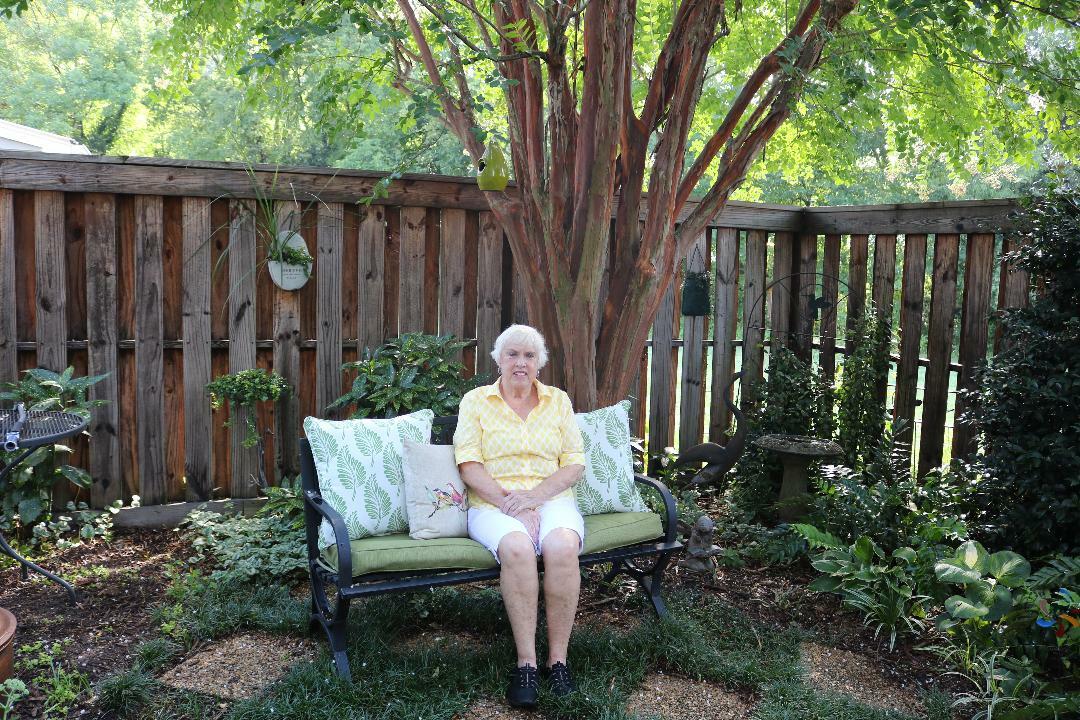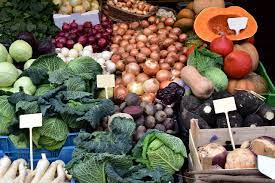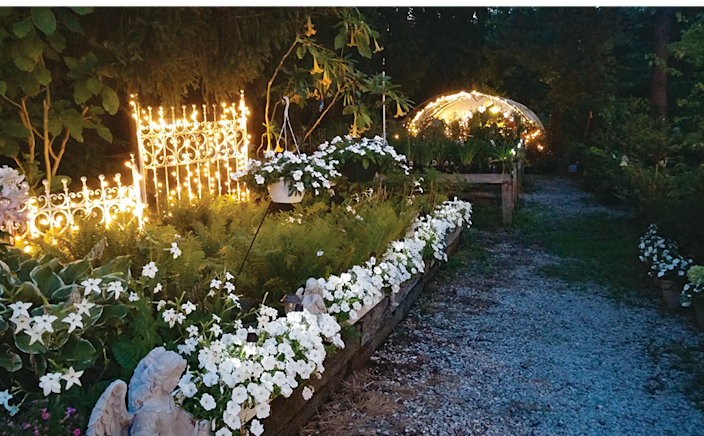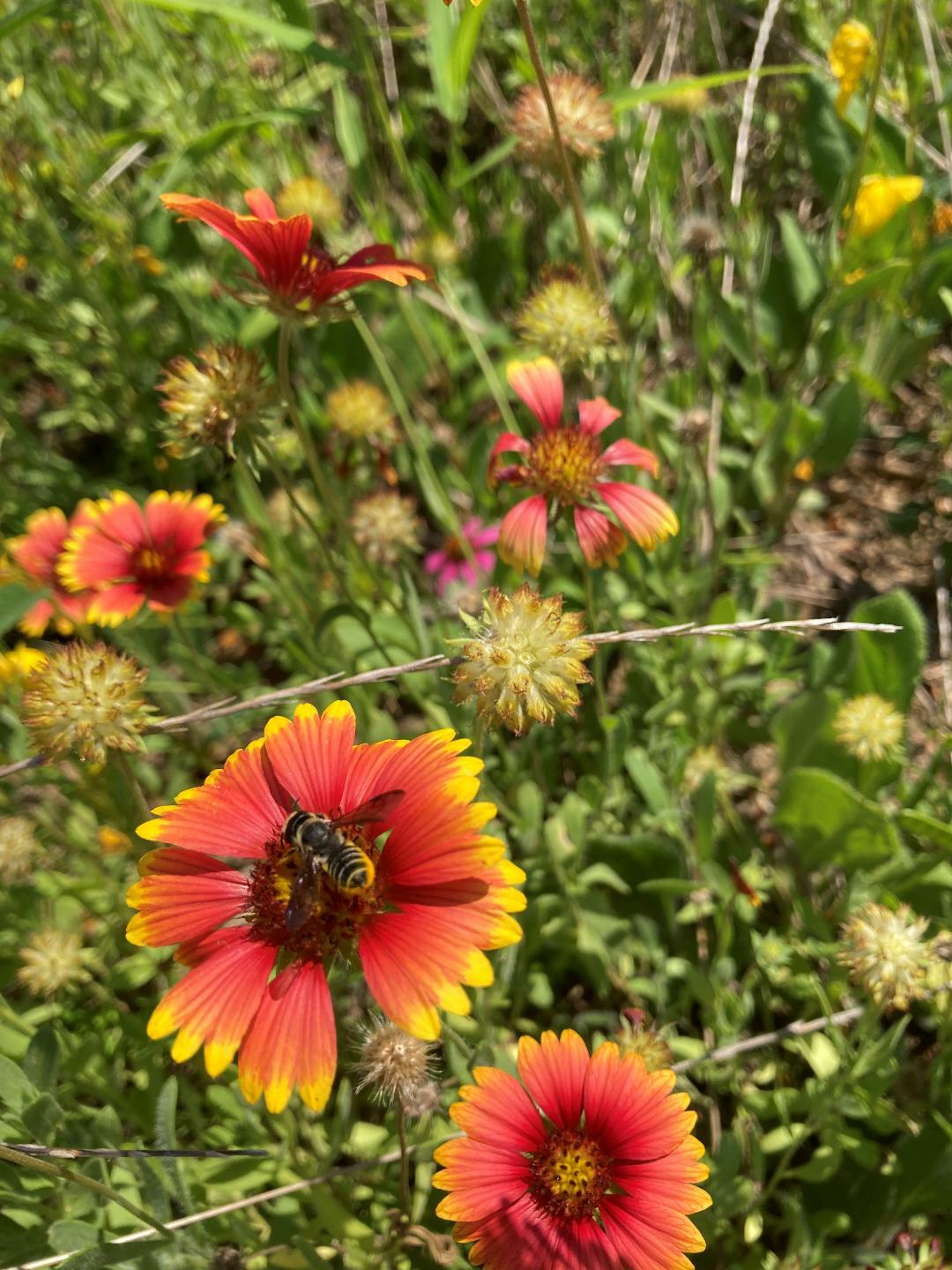| Welcome to Garden Zone, a monthly newsletter for anyone interested in gardening. It's produced by Extension Master Gardener volunteers in Mecklenburg County. View in your browser October Garden Tasks It’s time for spring-flowering bulbs to go in, trees and shrubs to be planted, perennials divided, and mulch applied to beds to protect and build soil. October is also a month to take pause. Soak up the fall colors and the changing sunlight! Vegetables ✳️ Plant onion sets, garlic, cabbage, collards, swiss chard and kale. ✳️ Watch for green worms on broccoli, cabbage, cauliflower and collards. Perennials & annuals ✳️ Continue to dig and divide spring and early summer-blooming perennials before the foliage dies back. Daylilies, Hostas and Shasta daisies are some examples. ✳️ Plant identification markers beside your herbaceous perennials before they die back for the winter so you won’t disturb them when planting in the spring. ✳️ Leave seed-bearing perennials -- ornamental grasses, coneflower, sunflowers, black-eyed Susan -- to feed the birds and provide cover for beneficial insects over the winter. Bulbs ✳️ Plant spring-blooming bulbs from late October through December. ✳️ Keep your bulbs in the refrigerator until you’re ready to plant them. Trees & shrubs ✳️ It’s the best time to plant new trees and shrubs. ✳️ Start that fall leaf pile! ✳️ Watch for lace bugs on azalea and pyracantha. Lawns ✳️ Aerate your lawn. ✳️ Coring lawns can help to minimize compaction and improve rooting. ✳️ Plant cool-season grasses like tall fescue. Remember: DO NOT PRUNE shrubs or trees in late summer or early autumn. Pruning stimulates new growth which may not have time to harden off before frost. You can remove any deadwood from shrubs or trees. Houseplants that spent the summer outdoors should be cleaned up and brought indoors when night temperatures fall below 50 degrees. For more info, click here https://www.mastergardenersmecklenburg.org/october-fall-begins.html Meet a Master Gardener Elna Falls is one of the first Master Gardeners to receive certification status from the 2022 class! At 80 years young, Elna has always wanted to become a Master Gardener and she thoroughly enjoyed all of the wonderful Master Gardener classes and lectures. Combining her love of working in the yard and making things look beautiful with her newly acquired Master Gardener knowledge, she looks forward to helping others become better gardeners. Elna’s favorite things to grow are zinnias and flowers for cut arrangements, which she enjoys sharing with friends and retirement center residents. She has worked tirelessly in the Freedom Gardens and took extra watering shifts to make sure that the plants that were transplanted would thrive in their new locations even in the summer heat! Elna loves the Freedom Gardens crew and intends to continue to focus on beautifying that space for the community to enjoy, in addition to working in other community gardens and helping to diagnose plant issues. Pictures courtesy of EMG Amy DeAngelis Russell Companion Planting Obedient Plant (Physostegia Virginiana) has been blooming steadily since early August. It is such a pollinator magnet! There is never a time when it is not being visited by Bees, Hummingbirds, Goldfinches and/or Eastern Tiger Swallowtails. It gets it's name because the flowers on the stalk obediently remain in any position they are twisted into! It is supposed to grow a maximum of 4 feet tall but is often closer to 6 feet tall! It is native to this region, perennial and a member of Lamiacae (mint) family which means it spreads quite vigorously. However, it is easy to pull up because the roots are quite shallow. Place a perimeter of stakes to provide it support because it gets quite tall. The blooms will continue until frost. They are a beautiful sight and a popular source of nectar for the pollinators. If you have never grown Obedient Plant, do give it a try! Photos courtesy of EMG Parul Sinha Fall Vegetable Gardening Are you a little sad as you pull those last few summer vegetable plants from your garden or containers? Well, perk up because you can continue to grow plenty of vegetables here in the Piedmont, some even through the winter! Consider arugula, beets, broccoli, Brussels sprouts, cabbage, collards, kale, lettuces, mustard or spinach. We usually get our first frost around mid-November and many of these can withstand heavy frost of air temperatures below 28 degrees. We’ve included links to help you plan your next move. So, turn off the streaming and get back in the garden! Vegetable Gardening: A Beginner's Guide - If you are new to vegetable gardening, this is a great place to start. Gardening Planting Calendar for Annual Vegetables, Fruits and Herbs in NC - Great reference that provides an A-Z listing of plants and when to plant throughout the growing season by region (Eastern, Piedmont, Western). Central North Carolina Planting Calendar for Annual Vegetables, Fruits, and Herbs - Provides guidance for growing specifically in our region. Poor Renfrow’s Almanac - Garden of Eatin' - Renfrow Hardware has developed a fun and catchy way to think about planning for a garden! Photo courtesy of Pixabay The Often-Overlooked Night Shift: Nocturnal Pollinators Periodically when I take my dog outside at night I’m overwhelmed by the beauty and life abounding in the small corner of my yard dedicated to a pollinator garden. The area is awash in pollinating creatures! Nocturnal pollinators are moths, bats, beetles, and some species of bee which feed on nectar when daytime (diurnal) pollinators rest for the evening. In addition to visiting generalist flowers at night, research has demonstrated that nocturnal pollinators are as capable as bees at pollinating apple blossoms. More research is needed, however, on their pollination of other food crops and into policies to help support and protect them and prevent their global decline. One way to support nocturnal pollinators are moon gardens. Moon gardens are traditionally dedicated to attracting nocturnal pollinators, and they do not have to be expansive. Nocturnal pollinators are attracted to shimmery, light-colored and strongly scented flowers of night blooming plants, like the evening primrose, sweet alyssum, night-blooming jasmine, gardenia and cacti. When creating a moon garden, remember the sunlight needs of the plants; even though they bloom at night, many still require significant sunlight during the day. Ideally, moon gardens can become a peaceful haven for nocturnal pollinators and humans alike! For more information on Nocturnal Pollinators, see Into the Night: Shedding Light on Nocturnal Pollinators by John Lovett at Into the Night: Shedding Light on Nocturnal Pollinators ; Nocturnal pollination: an overlooked ecosystem service vulnerable to environmental change by Callum J. Macgregor and Alison S. Scott-Brown at Nocturnal pollination: an overlooked ecosystem service vulnerable to environmental change and Creating a Spellbinding Moon Garden for Night Pollinators at Creating a spellbinding moon garden for night pollinators | U.S. Fish & Wildlife Service . Photos courtesy of EMG Gina Tadle, Xerces Society, Gardening Know How, and news.yahoo.com Cardboard Gardening Thinking of a new bed or shape for an ornamental garden? Spring is a great time for planting, but fall is the time to prepare the bed. Give your delivery boxes a new life! The new bed can be designed with large pieces of non-waxy cardboard or lots of smaller boxes. Create the curves and edges of the design using the cardboard for the layout. With a heavy marker, draw circles for different plants and test the layout for spacing. Now comes the best part! Leave the cardboard right where it is. A few rocks or stakes will hold it in place. As leaves fall, pile them on top of the cardboard to create a 4-6 inch mulch layer over the cardboard. Add shredded newspaper and all those small sticks and branches that fall everywhere. Water everything to hold it in place. Over the winter, the mulch and cardboard will decompose, attracting microbes and small organisms. It will provide winter cover for insects. The weeds and grass underneath become smothered, and any weed seeds are buried. Come spring, the ground will be soft. Cut through any remaining cardboard, allowing at least three extra inches for plants to get oxygen and water, and start planting. Photo courtesy of EMG Connie Rothwell SPRING BEGINS IN FALL With the cooler temperatures of autumn, our thoughts turn to planting spring-flowering bulbs. The window of opportunity is October through November as it gives the newly planted bulbs time to grow roots before the coldest months set in. By mid-February, some are already eagerly poking bright green leaves through the ground and are a joy to see. There are some distinctions between the plants we generically call “bulbs”: Bulbs include: oxalis, daffodil, amaryllis, rain lily, hyacinth, daylily, tulip, and alliums Corms include: crocus, gladiolus, cyclamen, colchicum, crocosmia Rhizomes include: iris, canna, gingers, trillium, lily-of-the-valley, solomon’s seal Tubers include: caladium, calla, anemone, ranunculus, tuberous begonia, alstroemeria Many gardeners in Zone 7b/8a have difficulty growing the brilliantly colored Dutch tulips featured in the catalogues. They will reliably bloom the first year after planting but should be treated as annuals that need to be replaced. There are some beautiful, though not as showy, species tulips that are perennial in our climate. These normally have to be ordered online or from catalogues and here are a few examples: Photo 1: CANDIA TULIP (T. SAXATILIS), Perennial, can be ordered thru Van Engelen Photo 2: LADY TULIP (T. CLUSIANA), perennial, can be ordered thru Van Engelen or Brent and Becky’s Photos courtesy of Sylvia Hindman Starting Your |
Welcome to Garden Zone, a monthly newsletter for anyone interested in gardening. It's produced by Extension Master Gardener volunteers in Mecklenburg County.
| |
|
|
It’s time for spring-flowering bulbs to go in, trees and shrubs to be planted, perennials divided, and mulch applied to beds to protect and build soil.
October is also a month to take pause. Soak up the fall colors and the changing sunlight!
Vegetables
✳️ Plant onion sets, garlic, cabbage, collards, swiss chard and kale.
✳️ Watch for green worms on broccoli, cabbage, cauliflower and collards.
Perennials & annuals
✳️ Continue to dig and divide spring and early summer-blooming perennials before the foliage dies back. Daylilies, Hostas and Shasta daisies are some examples.
✳️ Plant identification markers beside your herbaceous perennials before they die back for the winter so you won’t disturb them when planting in the spring.
✳️ Leave seed-bearing perennials -- ornamental grasses, coneflower, sunflowers, black-eyed Susan -- to feed the birds and provide cover for beneficial insects over the winter.
Bulbs
✳️ Plant spring-blooming bulbs from late October through December.
✳️ Keep your bulbs in the refrigerator until you’re ready to plant them.
Trees & shrubs
✳️ It’s the best time to plant new trees and shrubs.
✳️ Start that fall leaf pile!
✳️ Watch for lace bugs on azalea and pyracantha.
Lawns
✳️ Aerate your lawn.
✳️ Coring lawns can help to minimize compaction and improve rooting.
✳️ Plant cool-season grasses like tall fescue.
Remember: DO NOT PRUNE shrubs or trees in late summer or early autumn. Pruning stimulates new growth which may not have time to harden off before frost. You can remove any deadwood from shrubs or trees.
Houseplants that spent the summer outdoors should be cleaned up and brought indoors when night temperatures fall below 50 degrees.
For more info, click herehttps://www.mastergardenersmecklenburg.org/october-fall-begins.html
| |
 |
Elna Falls is one of the first Master Gardeners to receive certification status from the 2022 class! At 80 years young, Elna has always wanted to become a Master Gardener and she thoroughly enjoyed all of the wonderful Master Gardener classes and lectures. Combining her love of working in the yard and making things look beautiful with her newly acquired Master Gardener knowledge, she looks forward to helping others become better gardeners.
Elna’s favorite things to grow are zinnias and flowers for cut arrangements, which she enjoys sharing with friends and retirement center residents. She has worked tirelessly in the Freedom Gardens and took extra watering shifts to make sure that the plants that were transplanted would thrive in their new locations even in the summer heat! Elna loves the Freedom Gardens crew and intends to continue to focus on beautifying that space for the community to enjoy, in addition to working in other community gardens and helping to diagnose plant issues.
Pictures courtesy of EMG Amy DeAngelis Russell
| |
Obedient Plant (Physostegia Virginiana) has been blooming steadily since early August. It is such a pollinator magnet! There is never a time when it is not being visited by Bees, Hummingbirds, Goldfinches and/or Eastern Tiger Swallowtails. It gets it's name because the flowers on the stalk obediently remain in any position they are twisted into! It is supposed to grow a maximum of 4 feet tall but is often closer to 6 feet tall! It is native to this region, perennial and a member of Lamiacae (mint) family which means it spreads quite vigorously. However, it is easy to pull up because the roots are quite shallow.
Place a perimeter of stakes to provide it support because it gets quite tall. The blooms will continue until frost. They are a beautiful sight and a popular source of nectar for the pollinators. If you have never grown Obedient Plant, do give it a try!
Photos courtesy of EMG Parul Sinha
| |
 |
Are you a little sad as you pull those last few summer vegetable plants from your garden or containers? Well, perk up because you can continue to grow plenty of vegetables here in the Piedmont, some even through the winter! Consider arugula, beets, broccoli, Brussels sprouts, cabbage, collards, kale, lettuces, mustard or spinach. We usually get our first frost around mid-November and many of these can withstand heavy frost of air temperatures below 28 degrees. We’ve included links to help you plan your next move. So, turn off the streaming and get back in the garden!
Vegetable Gardening: A Beginner's Guide - If you are new to vegetable gardening, this is a great place to start.
Gardening Planting Calendar for Annual Vegetables, Fruits and Herbs in NC - Great reference that provides an A-Z listing of plants and when to plant throughout the growing season by region (Eastern, Piedmont, Western).
Central North Carolina Planting Calendar for Annual Vegetables, Fruits, and Herbs - Provides guidance for growing specifically in our region.
Poor Renfrow’s Almanac - Garden of Eatin' - Renfrow Hardware has developed a fun and catchy way to think about planning for a garden!
Photo courtesy of Pixabay
| |
The Often-Overlooked Night Shift: Nocturnal Pollinators | |
 |
Periodically when I take my dog outside at night I’m overwhelmed by the beauty and life abounding in the small corner of my yard dedicated to a pollinator garden. The area is awash in pollinating creatures! Nocturnal pollinators are moths, bats, beetles, and some species of bee which feed on nectar when daytime (diurnal) pollinators rest for the evening.
In addition to visiting generalist flowers at night, research has demonstrated that nocturnal pollinators are as capable as bees at pollinating apple blossoms. More research is needed, however, on their pollination of other food crops and into policies to help support and protect them and prevent their global decline.
One way to support nocturnal pollinators are moon gardens. Moon gardens are traditionally dedicated to attracting nocturnal pollinators, and they do not have to be expansive. Nocturnal pollinators are attracted to shimmery, light-colored and strongly scented flowers of night blooming plants, like the evening primrose, sweet alyssum, night-blooming jasmine, gardenia and cacti. When creating a moon garden, remember the sunlight needs of the plants; even though they bloom at night, many still require significant sunlight during the day. Ideally, moon gardens can become a peaceful haven for nocturnal pollinators and humans alike!
For more information on Nocturnal Pollinators, see Into the Night: Shedding Light on Nocturnal Pollinators by John Lovett at Into the Night: Shedding Light on Nocturnal Pollinators; Nocturnal pollination: an overlooked ecosystem service vulnerable to environmental change by Callum J. Macgregor and Alison S. Scott-Brown at Nocturnal pollination: an overlooked ecosystem service vulnerable to environmental change and Creating a Spellbinding Moon Garden for Night Pollinators at Creating a spellbinding moon garden for night pollinators | U.S. Fish & Wildlife Service.
Photos courtesy of EMG Gina Tadle, Xerces Society, Gardening Know How, and news.yahoo.com
| |
 |
Cardboard Gardening
Thinking of a new bed or shape for an ornamental garden? Spring is a great time for planting, but fall is the time to prepare the bed. Give your delivery boxes a new life!
The new bed can be designed with large pieces of non-waxy cardboard or lots of smaller boxes. Create the curves and edges of the design using the cardboard for the layout. With a heavy marker, draw circles for different plants and test the layout for spacing.
Now comes the best part! Leave the cardboard right where it is. A few rocks or stakes will hold it in place. As leaves fall, pile them on top of the cardboard to create a 4-6 inch mulch layer over the cardboard. Add shredded newspaper and all those small sticks and branches that fall everywhere. Water everything to hold it in place.
Over the winter, the mulch and cardboard will decompose, attracting microbes and small organisms. It will provide winter cover for insects. The weeds and grass underneath become smothered, and any weed seeds are buried. Come spring, the ground will be soft. Cut through any remaining cardboard, allowing at least three extra inches for plants to get oxygen and water, and start planting.
Photo courtesy of EMG Connie Rothwell
| |
With the cooler temperatures of autumn, our thoughts turn to planting spring-flowering bulbs. The window of opportunity is October through November as it gives the newly planted bulbs time to grow roots before the coldest months set in. By mid-February, some are already eagerly poking bright green leaves through the ground and are a joy to see.
There are some distinctions between the plants we generically call “bulbs”:
Bulbs include: oxalis, daffodil, amaryllis, rain lily, hyacinth, daylily, tulip, and alliums
Corms include: crocus, gladiolus, cyclamen, colchicum, crocosmia
Rhizomes include: iris, canna, gingers, trillium, lily-of-the-valley, solomon’s seal
Tubers include: caladium, calla, anemone, ranunculus, tuberous begonia, alstroemeria
Many gardeners in Zone 7b/8a have difficulty growing the brilliantly colored Dutch tulips featured in the catalogues. They will reliably bloom the first year after planting but should be treated as annuals that need to be replaced. There are some beautiful, though not as showy, species tulips that are perennial in our climate. These normally have to be ordered online or from catalogues and here are a few examples:
Photo 1: CANDIA TULIP (T. SAXATILIS), Perennial, can be ordered thru Van Engelen
Photo 2: LADY TULIP (T. CLUSIANA), perennial, can be ordered thru Van Engelen or Brent and Becky’s
Photos courtesy of Sylvia Hindman
| |
 |
Starting Your Pollinator Garden
Most of the world’s fruits and vegetables are pollinated by insects like bees, flies, and moths. These pollinators are responsible for every third bite of food we take, and many are in rapid decline. Planting a pollinator garden this fall is one easy way to support these species.
Whether starting from scratch or renovating an existing bed, fall is a great time to begin. Planting in the fall encourages perennials to grow strong root systems before the heat and drought of summer. Fall is also the ideal time to sow wildflower seeds that require exposure to cold conditions to germinate.
When selecting your plants, remember that pollinators need food from spring through fall, so choose a diversity of plants that bloom throughout the year. Native plants are well adapted to local conditions making them the best choice. Below you will find a comprehensive list of pollinator plants native to North Carolina.
Pollinator-Garden-Plant-List.pdf (ncsu.edu)
Lastly, it is important to remember to provide shelter and places for pollinators to raise young. Many bees nest in bare ground or cavities in stems or wood. Butterflies and other species may overwinter as larvae or pupa in brush piles. Incorporating these areas into your garden will attract a diversity of species.
Photo courtesy of EMG Alden Picard, Houzz, and CultureMap
| |
Planting in a Square Foot Garden | |
We learned how to build our square foot garden last month, now let’s look at planting in one. Consider what you want to grow be it herbs, flowers, fruit, or vegetables. When planting, remember to put taller growing plants in the back so they don’t shade out the smaller plants and to check the planting guide for how much room is needed for each seed or plant.
In each square, you can plant approximately:
1 large plant – tomato
4 medium plants – arugula
6 tiny plants – leaf lettuce
9 small plants – beets
16 carrot seeds
Photos courtesy of Donna Teasley
| |
Some of my favorite bloomers | |
Some favorite bloomers that last well into fall are Rudbeckias, Morning Glory, and Zinnias. Not only do they bring much color and joy, but they feed the birds, bees, butterflies, and the other creatures that live in our yards. Rudbeckias have lovely colors ranging from yellow and orange to deep red. Morning Glories come in many colors but deep purple is particularly beautiful. Zinnias are always a fan-favorite that come in every color in the rainbow!
Photos courtesy of EMG Gina Tadle
| |
No Tricks, Just Our Treats
| |
|
|
Oct. 23 - 31, 2021
If you have plants or seeds to give away, we have just the solution. Join other Master Gardeners the week of Oct. 23-31 for a plant giveaway in each of our neighborhoods. Compile your seeds and plants over the next few weeks and promote your personal plant giveaway! Here are some guidelines to help you plan your event.
- Schedule the event for anytime during the week of Oct. 23-31; if possible, target Saturday, Oct. 29th - Sunday, Oct. 31 (Halloween). Pick one of these days and a 2-hour time slot that works with your schedule.
- Promote the seed/plant giveaway through your personal social media (Neighborhood Facebook, Nextdoor) or word of mouth, etc. -- choose whatever way that works best for you to let your neighbors.
- Use the template we’ve created to label your seeds / plants.
- Zip lock bags can be used for the seeds; insert the plant tag inside.
- Plants can be put in plastic containers or large plastic bags; add a plant tag to each item
- Use a small table to display the seed packets -- in your front yard or in your driveway
-
Display the sign about this project on your table
- If you are a Master Gardener / Intern identify yourself and wear your name tag
- As always, practice social distancing; wear a mask but make an effort to talk with your neighbors.
Sponsored by Mecklenburg County Extension Master Gardeners. Have Fun!
| |
|
|
Like our content? Share it with friends and neighbors! They can subscribe here. | |
Follow us on Social media | |
|
|
|
|
The Mecklenburg Extension Master Gardener Volunteer (EMGV) program operates under the Mecklenburg Center of the NC Cooperative Extension Service (NCCES), a part of NC State University and NC A&T State University.
NCCES is a part of Mecklenburg County Park and Recreation.
| |
| |
|
NC State University and N.C. A&T State University commit themselves to positive action to secure equal opportunity and prohibit discrimination and harassment regardless of age, color, disability, family and marital status, gender identify, genetic information, national origin, political beliefs, race, religion, sex (including pregnancy), sexual orientation and veteran status. NC State, N.C. A&T, U.S. Department of Agriculture, and local governments cooperating. | |
|
|
| |
|